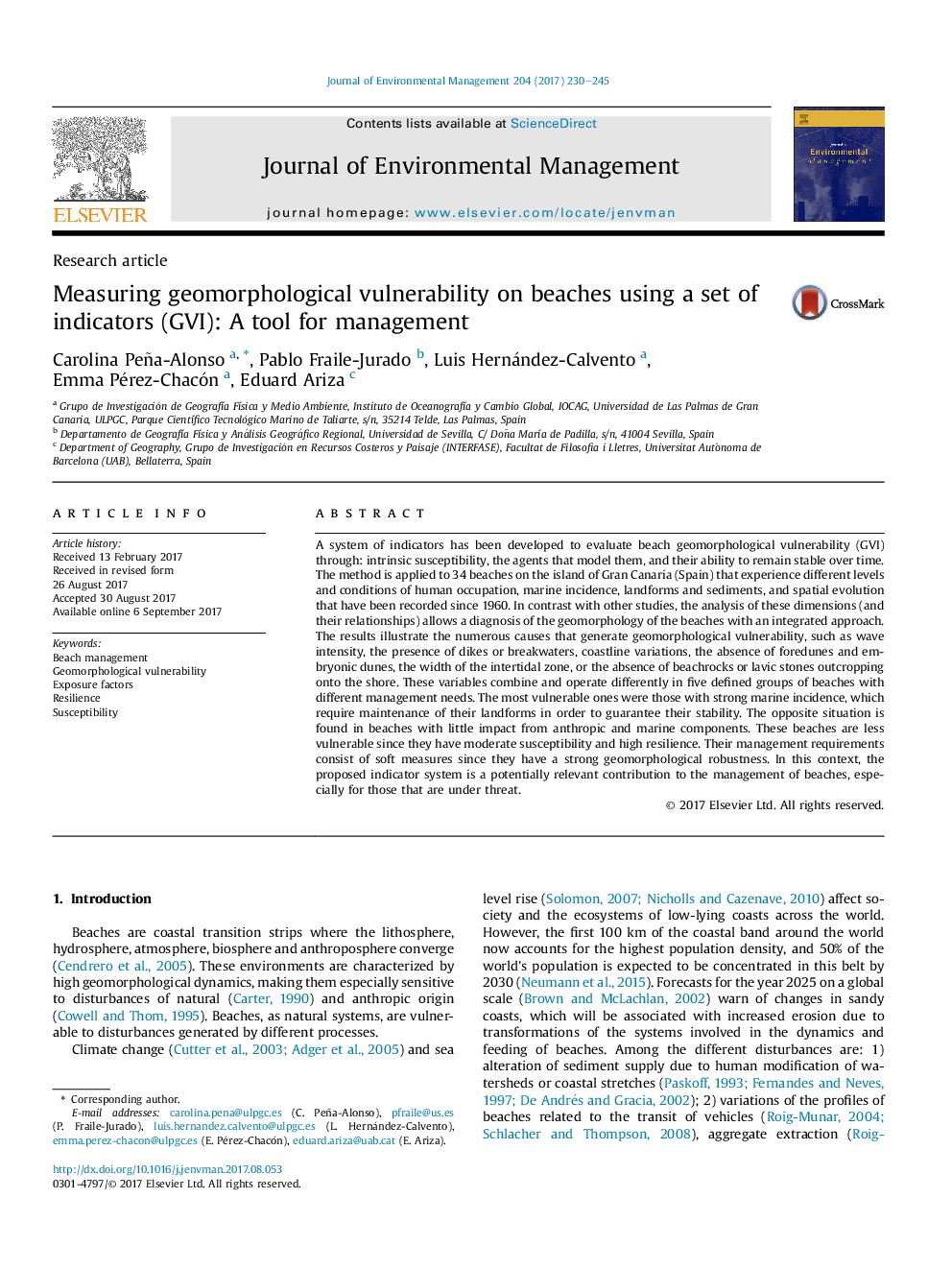| Article ID | Journal | Published Year | Pages | File Type |
|---|---|---|---|---|
| 5116260 | Journal of Environmental Management | 2017 | 16 Pages |
â¢This research analyzes the processes of geomorphological vulnerability in beaches.â¢The method is applied in beaches with different human and natural characteristics.â¢Beaches are grouped according to the geomorphological vulnerability dimensions.â¢Combined processes are identified between susceptibility and exposure agents.â¢The scale of analysis proposed with the GVI is useful for beach managers.
A system of indicators has been developed to evaluate beach geomorphological vulnerability (GVI) through: intrinsic susceptibility, the agents that model them, and their ability to remain stable over time. The method is applied to 34 beaches on the island of Gran Canaria (Spain) that experience different levels and conditions of human occupation, marine incidence, landforms and sediments, and spatial evolution that have been recorded since 1960. In contrast with other studies, the analysis of these dimensions (and their relationships) allows a diagnosis of the geomorphology of the beaches with an integrated approach. The results illustrate the numerous causes that generate geomorphological vulnerability, such as wave intensity, the presence of dikes or breakwaters, coastline variations, the absence of foredunes and embryonic dunes, the width of the intertidal zone, or the absence of beachrocks or lavic stones outcropping onto the shore. These variables combine and operate differently in five defined groups of beaches with different management needs. The most vulnerable ones were those with strong marine incidence, which require maintenance of their landforms in order to guarantee their stability. The opposite situation is found in beaches with little impact from anthropic and marine components. These beaches are less vulnerable since they have moderate susceptibility and high resilience. Their management requirements consist of soft measures since they have a strong geomorphological robustness. In this context, the proposed indicator system is a potentially relevant contribution to the management of beaches, especially for those that are under threat.
